Observing Jupiter's Galilean Moons is a great activity to undertake when the planet is approaching opposition.
Jupiter reached opposition on 3 November 2023, a time when it is opposite the Sun in the sky.
Opposition is when a planet appears largest and brightest to us viewing from Earth.
For more advice, read our guide on how to observe Jupiter through a telescope
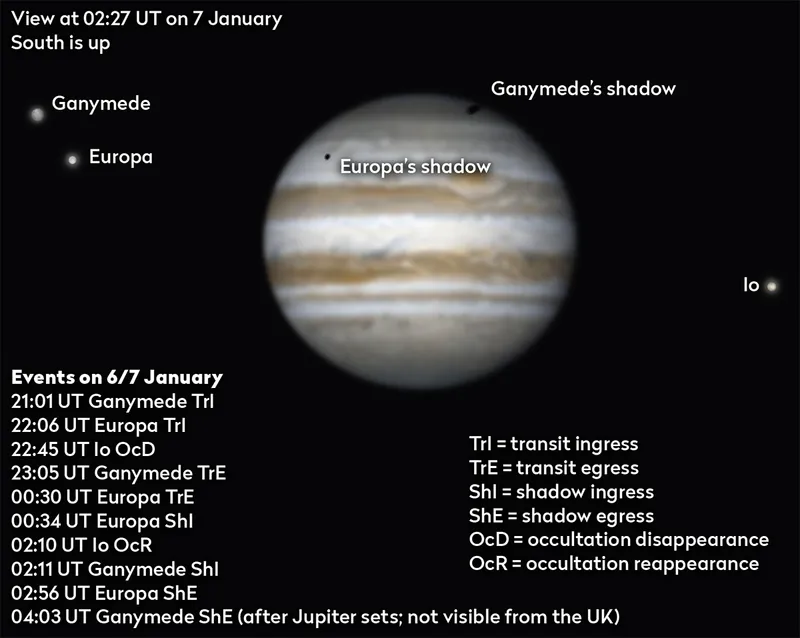
Jupiter Galilean Moon transit events
With Jupiter well placed for observation in January 2024, there’s great opportunity to catch some of the planet’s interactions with its moons.
A good challenge is to observe or image as many different types as you can. A freeware application such as WinJUPOS can be used to determine when these events will occur.
Jupiter has many moons, but only four are large and bright enough to be seen easily through a telescope.
As they orbit Jupiter, Earth gets to view various interactions between them and the planet’s globe. A common event is a transit, which is when a moon appears to cross Jupiter’s disc.
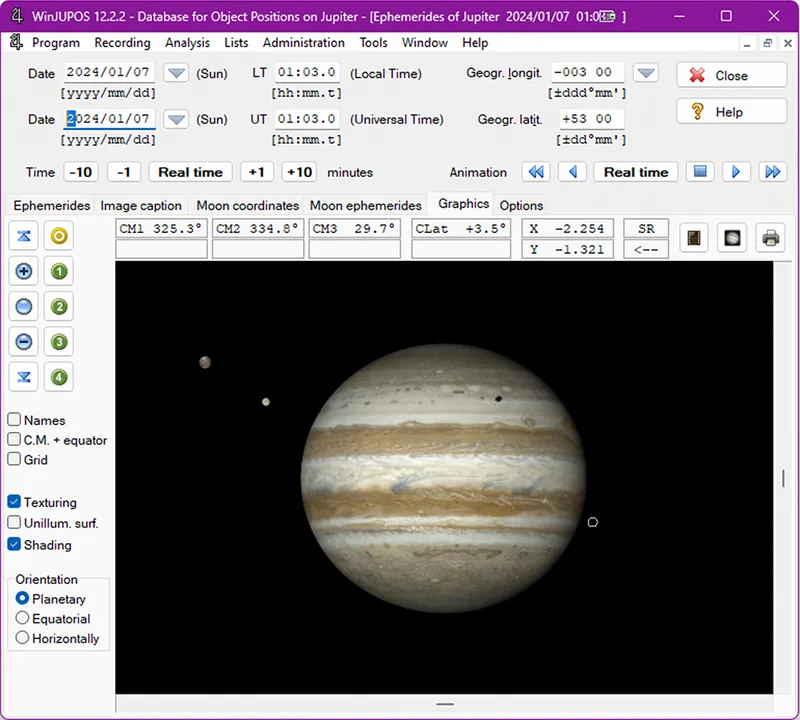
The point of first contact at the start of the event is called transit ingress, abbreviated as TrI.
The point of last contact is known as transit egress (TrE).
A moon transit will be accompanied by a shadow transit.
This too has an ingress (ShI) and egress (ShE). A moon trails its shadow before opposition and precedes it after.
At opposition both transit in sync, a phenomenon which only lasts for a day or so.
All four Galilean moons can show the transits described, but outermost Callisto’s orbit, combined with the shallow 3.1° axial tilt of Jupiter, means for most of the time Callisto misses Jupiter’s disc, passing north or south of it.
Only near a Jovian equinox do Callisto and its shadow transit Jupiter’s disc.

Jupiter Galilean Moon eclipses and occultations
In addition to transit events, there are eclipses and occultations, events caused by Jupiter itself.
An occultation occurs when a moon passes behind Jupiter’s globe.
The two parts of this event are the occultation disappearance (OcD) and occultation reappearance (OcR).
Eclipses occur when one of the moons passes into Jupiter’s shadow.
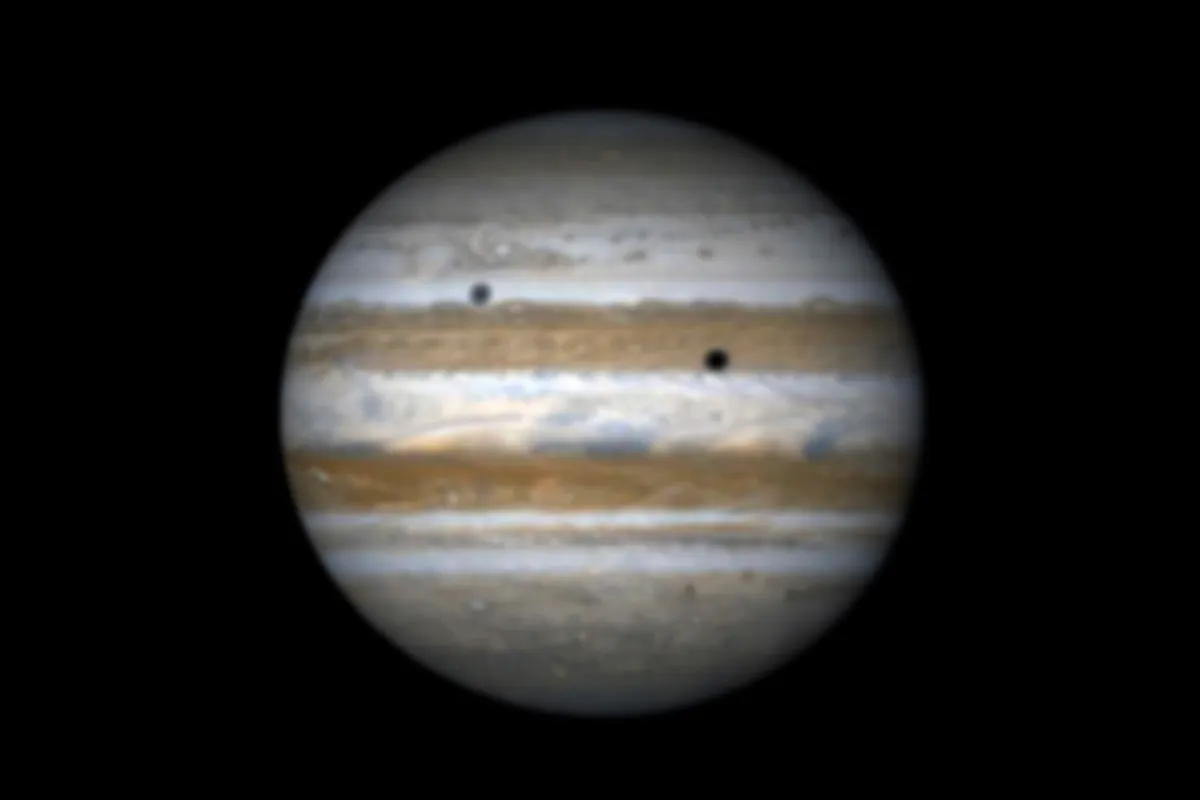
When the moon disappears, this is referred to as eclipse disappearance (EcD) and when the moon reappears it’s an eclipse reappearance (EcR).
How occultations and eclipses occur depends on the angle between the Sun, Jupiter and Earth.
Before opposition, Jupiter’s shadow hangs west of the planet and a moon undergoes an eclipse disappearance but may remain within the shadow as it passes behind Jupiter, re-emerging as an occultation reappearance.
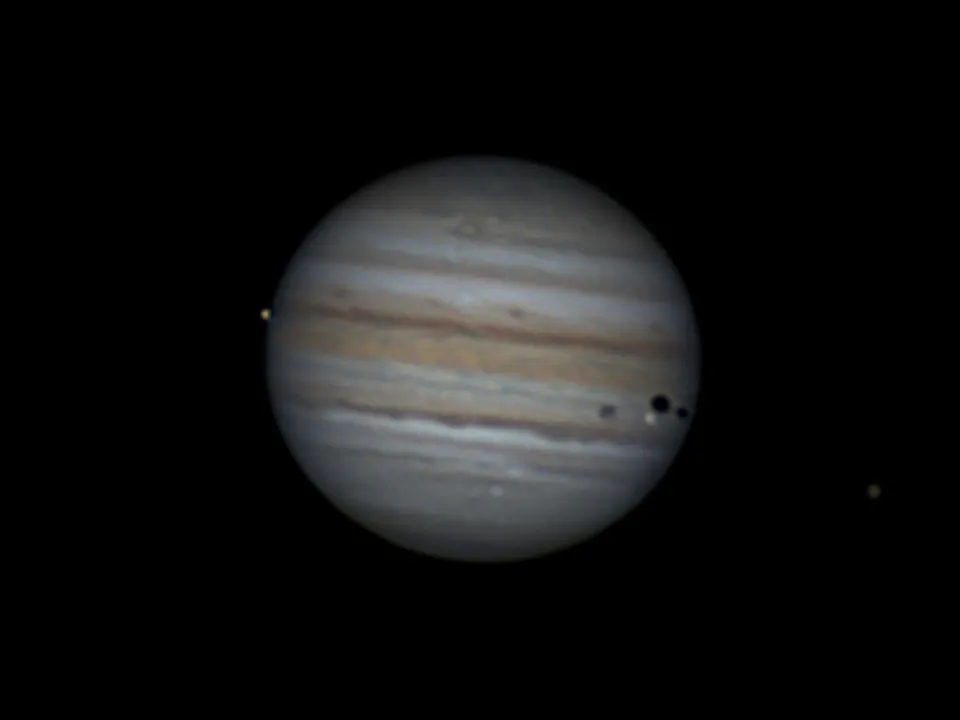
After opposition the reverse is true: a moon undergoes occultation disappearance then re-emerges from Jupiter’s shadow as an eclipse reappearance.
This slightly more complex scenario has a twist for the three outer Galileans, Europa, Ganymede and Callisto.
At certain times before opposition, these may enter Jupiter’s shadow (EcD), reappear from it (EcR) and then disappear behind Jupiter (OcD), finally re-emerging from the opposite side (OcR).
After opposition the sequence would be OcD, OcR, EcD and finally EcR.
This isn’t always the case, and the extra reappearance–disappearance stage in the middle doesn’t happen if Jupiter is close to opposition.
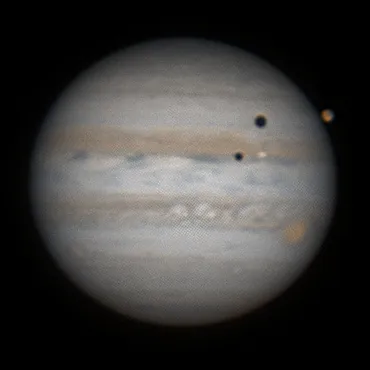
Observing Jupiter's Galilean moons: tips and tricks
Not only is Jupiter the largest of the planets – it would take 1,321 Earths to fill the volume of Jupiter – it’s also more than likely that it keeps the largest entourage of moons.
It’s the massive gravitational effect of Jupiter that does the trick, attracting more than 100 moons into orbit around the planet at the latest estimate.
Many of these satellites are fairly small and can’t be observed from Earth, but the biggest four are easy to spot with just a small pair of binoculars.
Binoculars

A minimum size pair of binoculars for spotting the four Galilean moons of Jupiter would be 7x50s, which magnify what your eyes see seven times and have front lenses that are 50mm in diameter.
You can certainly catch glimpses of these Galilean moons (named after Galileo, who first observed them) with hand-held binoculars.
However, your view will be much improved by resting the binoculars on a wall or fence, or even attaching them to a binocular tripod or mount with an inexpensive bracket.
With binoculars though, Jupiter itself will not appear as anything more than a large, slightly oval-shaped disc.
Telescope

The next step in viewing Jupiter Moons is to use a small telescope – one with a front lens 3 to 6 inches in diameter.As this gathers more light, it can magnify the view more, so the Moons will appear brighter and fill more of the field of view.
Don’t necessarily expect to see all four, however: as the moons travel around the planet they may be behind or in front of Jupiter when you’re looking.
It’s by using a larger scope with a front lens over 6 inches in diameter that you really start to see detail on Jupiter itself: not only the darker belts and lighter zones, but features within the gaseous atmosphere as well.
At this level of detail, observers can also see the occasional dark spot caused by the moons casting their shadows onto Jupiter’s atmosphere.
The joy of Jupiter is that whatever your level of equipment, there’s always something to see.
Galilean Moons at opposition
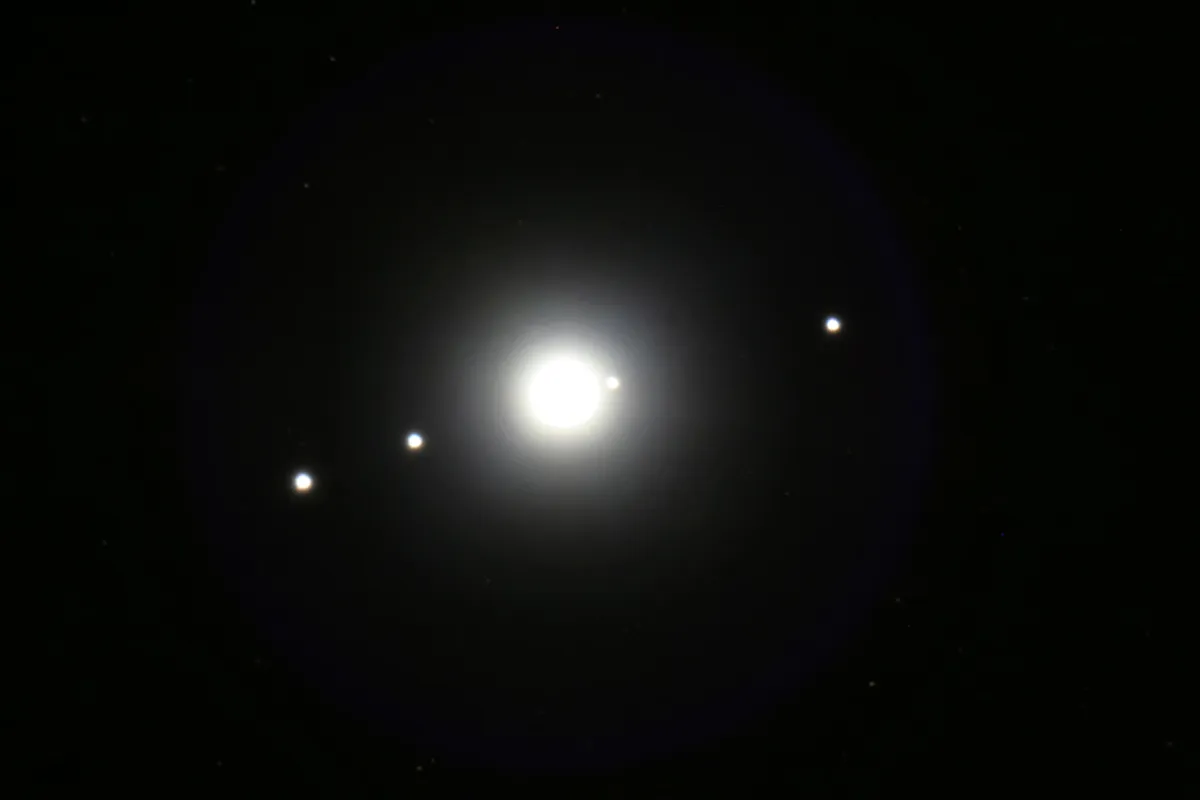
At opposition an interesting thing happens to the Galilean Moons when they transit the planet.
At this time their shadows appear to fall directly in line with the moons.
The alignment would be perfect if the declination of the Sun from Jupiter were 0° and the Sun–Earth–Jupiter alignment a perfect straight line.
In practice the declination won’t be 0°, but a little off at 3.1°.
Catching a moon passing at the exact point of opposition is down to luck and an offset of just a few hours either side is enough to show a misalignment.
However, it is interesting to see how a moon’s shadow precedes the moon that’s casting it before opposition and follows it after opposition.
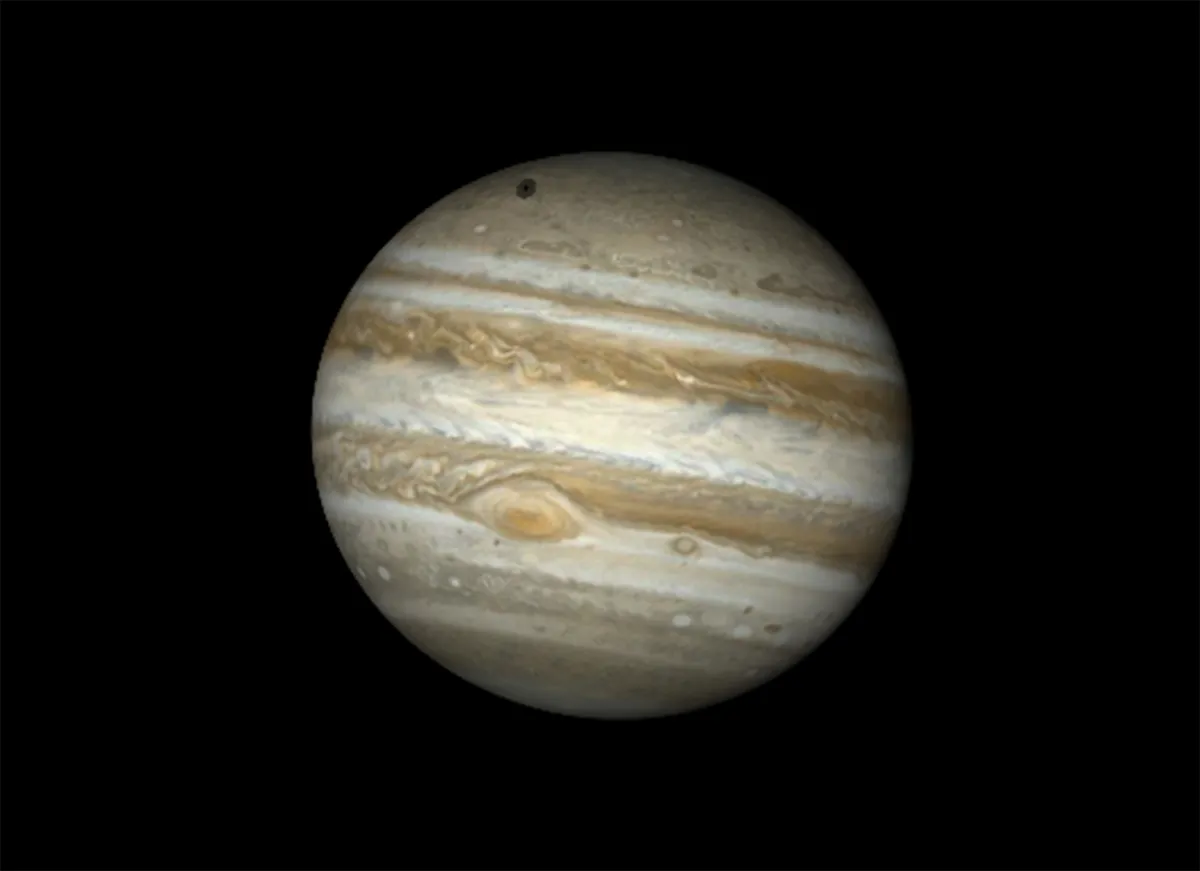
Owners of smaller scopes will even be able to enjoy some amazing interactions between the planet and its 4 largest moons: Io, Europa, Ganymede and Callisto.
These moons are bright and easily visible through smaller instruments as points of light.
For those with larger-aperture scopes, it may be possible to perceive the moons as tiny discs, the apparent diameters being:
- Io: 1.2 arcseconds
- Europa: 1.0 arcseconds
- Ganymede: 1.7 arcseconds
- Callisto: 1.5 arcseconds
Facts about the Galilean Moons
Io
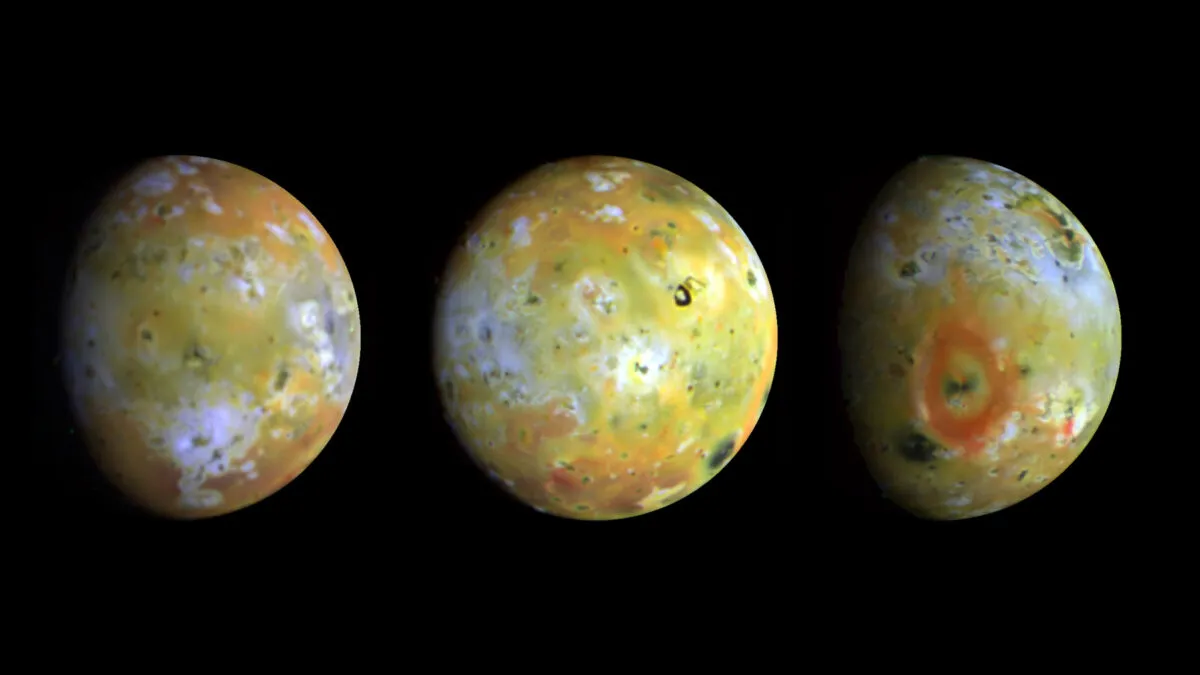
Diameter: 3,650km
The tremendous gravitational pull of Jupiter on this innermost of the four Galilean moons, together with its closeness to the planet, means Io whizzes round Jupiter in just 1.75 Earth days.
This fast orbital speed is easily seen in a small telescope: it visibly shifts position in just a few hours.
Physically, Io is the most volcanic place in the entire Solar System.
The whole world is covered in sulphurous lava flows and volcanoes erupting in plumes more than 500km high.
Europa
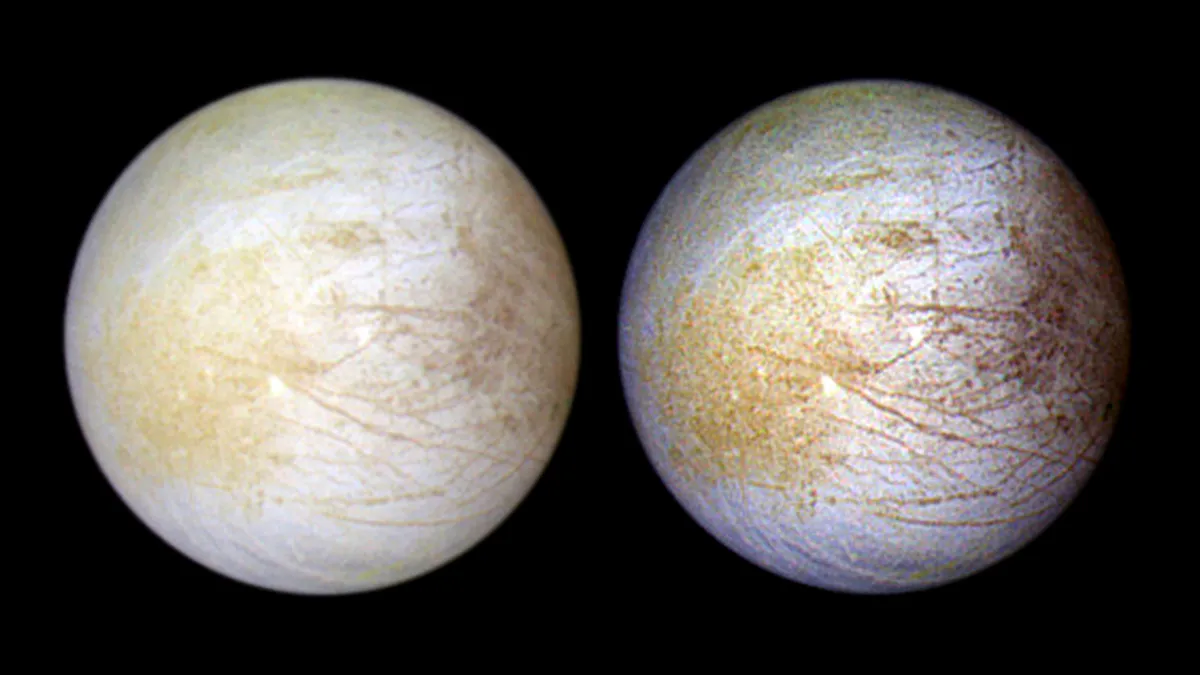
Diameter: 3,140km
The second Galilean moon out from Jupiter, Europa, should theoretically be visible with the naked eye since it shines at magnitude +5.3.
But Jupiter’s overwhelming brightness makes it difficult to separate the moon from the planet.
Europa’s brightness is due to its surface being smooth and icy.
Scientists suspect that underneath is a liquid water ocean, leaving open the possibility that life may lurk in the depths.
Ganymede
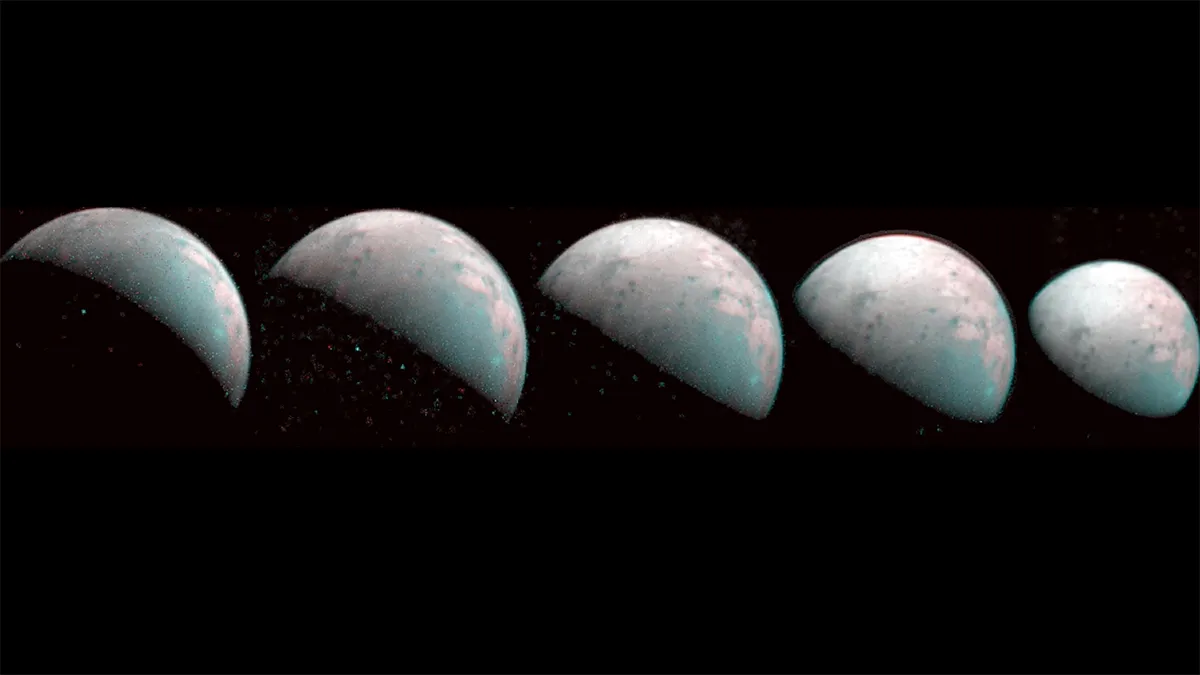
Diameter: 5,260km
The third major moon out from the planet is not only Jupiter’s biggest, but it is also the largest moon in the entire Solar System.
This is a world with a cold ice surface, a large warm ice (possibly water) mantle, a rocky interior and a liquid iron core. It measures a tremendous 5,260km across, which is bigger than Mercury.
Indeed, if Ganymede was released into space, it would be classed as a planet.
Callisto
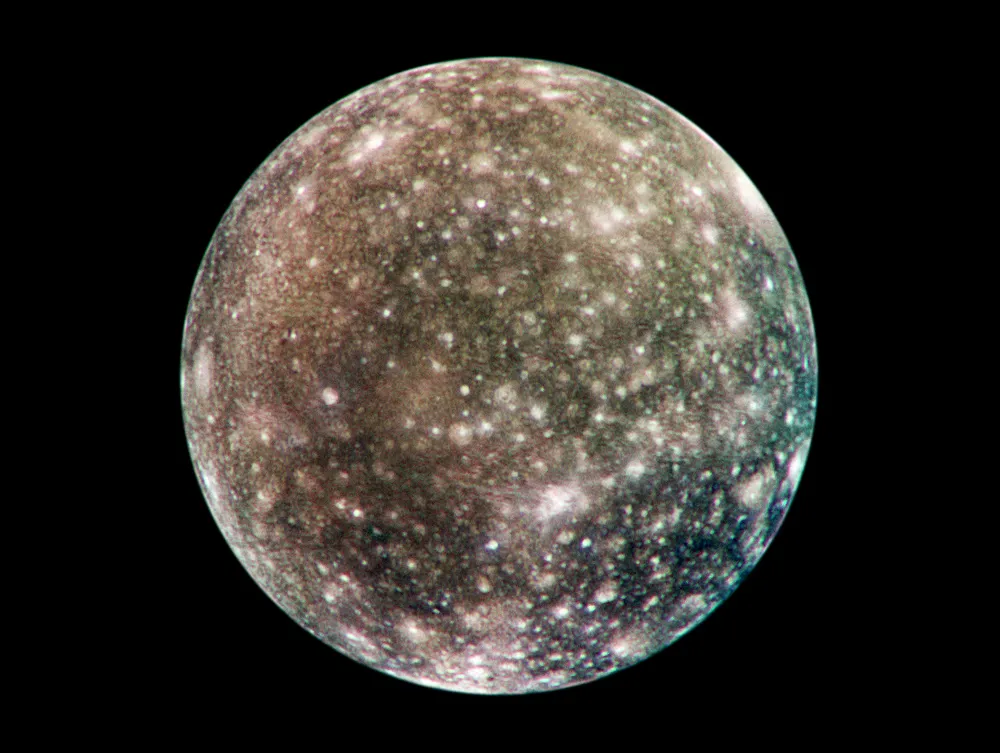
Diameter: 4,820km
The last of the four giant Galilean satellites is Callisto.
It is the third largest of the Solar System, after Titan, the biggest of Saturn’s moons.
Callisto ranks as one of the most cratered worlds known – its entire icy, ancient surface is covered with impact craters that date right back to the time of the early Solar System, when the moon formed.
Like Europa, it is thought that beneath the surface may lie a watery ocean.
